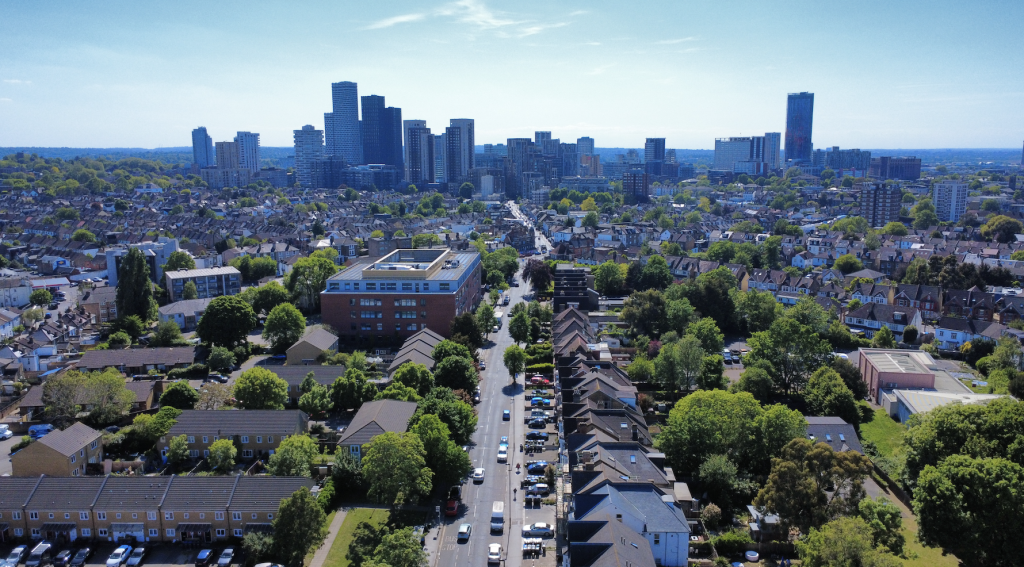Croydon is undergoing a major shift. Its new Future Croydon 2024–2029 Transformation Plan aims to deliver a radical change to housing, infrastructure, and services across the borough. The plan isn’t just about financial overhaul—it has huge implications for the housing market too. As new homes, regeneration projects and strategic planning come to the fore, local housing demand is set to evolve significantly.
In this post, we explore ten ways the transformation plan could reshape Croydon’s property market. And why those looking to buy, rent or invest here should pay attention.
1. Unlocking new homes through regeneration
A cornerstone of the strategy is a Regeneration & New Homes Programme. Large-scale redevelopment sites—like the Whitgift centre, East Croydon Opportunity Area, and Purley Way corridor—will deliver thousands of homes. Many of these will include a significant share of affordable and intermediate housing, thanks to Section 106 targets aiming for 50% affordable provision in developments above 10 units (split between social rent and intermediate options).
This influx of new supply could meet pressing demand from families, young professionals, and downsizers—offering a broader range of choices at differing price levels.
2. Boosting value through improved infrastructure
Croydon Council has committed to major upgrades across transport, town centre public spaces, civic buildings and rail links. The strategy includes Reconnected Croydon, a town centre regeneration programme that creates new public squares and pedestrian routes, and plans for East Croydon station improvements to increase throughput for tens of thousands of passengers each day.
Better infrastructure naturally increases desirability. Areas near upgraded amenities or transport hubs typically see faster house price growth and rental demand.
3. Financial stability creating housing confidence
A key goal of Future Croydon is to tackle the borough’s financial instability, reducing debt and making the council cost‑effective. With over £40m of yearly savings targeted—and a new governance model in place—the council aims to restore trust, strengthen services, and maintain investment. This steadiness is vital. Confidence in local government and planning stability encourages more property investment and homeowner interest.
4. Making council housing fit for purpose
The plan also includes a robust Housing Asset Management Strategy, aiming to upgrade existing stock and ensure homes are safe, warm, and energy-efficient. Investment in responsive maintenance and resident engagement is intended to make council housing more attractive, improve turnover, and reduce voids. Better quality social housing helps stabilise local supply dynamics and allows more sustained private housing growth.
5. Engaging residents in every stage
A standout feature of Croydon’s plan is the emphasis on resident consultation. From housing allocation to regeneration proposals, every phase includes meaningful engagement. This brings clarity and trust, reducing the risk of backlash or delays. Projects that enjoy strong local support tend to proceed faster and with fewer hiccups, attracting buyers who seek neighbourhoods with good governance and long‑term appeal.
6. Renewed focus on affordable homes
Croydon’s demographic has one of the youngest profiles in London. As rents rise and cost pressures mount, demand for affordable housing is acute. The strategy sets out commitments to deliver more high-quality social and intermediate homes. That will benefit first-time buyers and householders on low incomes—and may ease pressure on the private rental sector by widening options.
7. Emerging Hotspots: localised demand shifts
Already, areas like East Croydon, North End, Phipps Bridge and Purley Way are seeing construction activity upgrade their local profile. New developments, combined with better amenities and green spaces, are creating pockets of emerging value.
Housing in these areas is likely to attract a mix of professionals, renters and investors seeking growth potential before mainstream attention drives prices higher.
8. Rising rental opportunity
As new homes are delivered, rental options may diversify too. With improved transport and amenities, expect demand for both private rental and mid‑market rented housing to grow. Better rental stock—modern, energy‑efficient and close to transit—will likely command solid occupancy and healthy yields.
For landlords, this may be a moment to re-evaluate existing portfolios and target the next wave of Croydon rental areas.
9. Elevating housing standards
The plan prioritises safety, accessibility, and energy efficiency. That includes retrofitting older homes, improving heating systems, and enhancing communal spaces. Homes that meet net‑zero, sustainability and quality standards will be particularly appealing to buyers and renters conscious of long‑term costs and wellbeing.
Together, these upgrades boost perceived quality of life—and may support capital values across the borough.
10. What it means for buyers and agents
For anyone looking to buy or rent in Croydon, the housing transformation offers a compelling proposition. It means:
- New homes across price bands, improving choice.
- Better town centre and station spaces boosting local amenity.
- A clearer planning picture and stronger local governance.
- A shift in demand toward modern, low‑energy homes near transport.
- Emerging growth zones with strong upside.
Local estate agents in Croydon are reporting increased interest from buyers priced out of inner London or looking for value while maintaining connections to the city. Areas close to regeneration zones are attracting both owner‑occupiers and investors early, expecting demand and pricing to rise faster than in static neighbourhoods.
Risks and considerations
Of course, delivery matters. Regeneration projects must stay on schedule and meet quality standards. Any delay or funding shortfall could dampen momentum. The affordability of new housing also depends on viability and market conditions—too high a cost could undermine the goal of inclusive delivery.
Still, with clear governance reforms, resident involvement and infrastructure upgrades planned, the strategy has the potential to produce sustained change.
Final thoughts
Croydon’s Transformation Plan for 2024–2029 is an ambitious blueprint. It aims not just to fix financial challenges but to reshape housing, services and the entire borough’s reputation. With new homes, better public space, cleaner housing services, and smarter infrastructure, Croydon could emerge as a leading growth area in Outer London.
For buyers, renters or investors, this dynamic shift means Croydon is worth another look. Whether it’s new-build homes near East Croydon, upgraded council stock, or emerging neighbourhoods still overlooked, the housing backdrop is changing fast.
With a stronger local authority, long-term investment pipeline and a clear vision for better housing delivery, Croydon’s housing market is entering a period of genuine potential. A new chapter is beginning—and the benefits may be felt across the borough.



